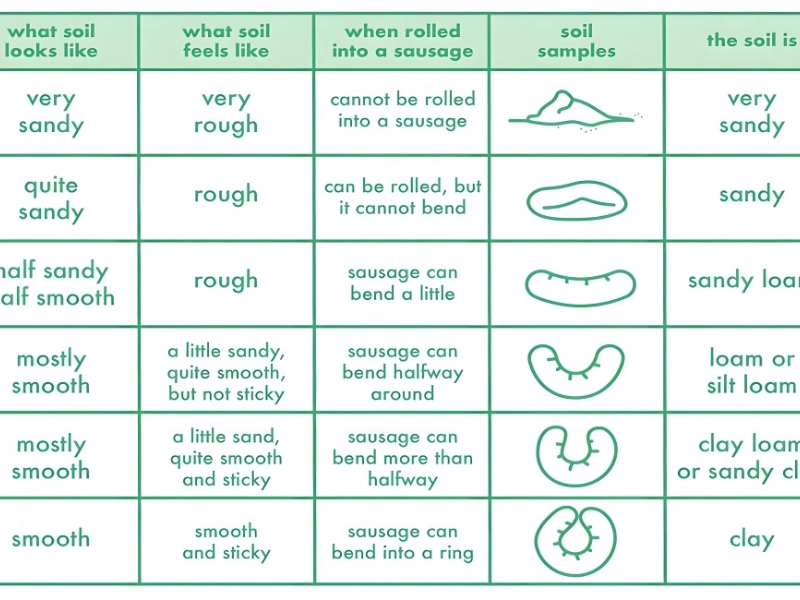
Understanding Soil Texture: A Guide to Using a Soil Chart Required Materials: Soil Texture Chart
Overview:
A soil texture chart is an essential tool for gardeners and landscapers, helping them identify the type of soil they are working with. Understanding soil texture is crucial for effective gardening, as it affects water retention, drainage, and nutrient availability.
How to Use a Soil Texture Chart:
Identify Soil Components:
Soil is primarily composed of three particles: clay, silt, and sand. The proportions of these components determine the soil's texture. Consult the Soil Texture Triangle:
The soil texture triangle is a graphical representation where the three sides correspond to the percentages of clay, silt, and sand. Reading the Chart: Clay: Read from the left side to the right. Silt: Read from the upper right to the lower left. Sand: Read from the lower right to the upper left. Determine Your Soil Type:
By measuring the percentages of clay, silt, and sand in your soil sample, you can locate your soil type on the triangle. For example: Sandy Soil: High sand content with low clay and silt. Clay Soil: High clay content with low sand and silt. Loamy Soil: Balanced mixture of clay, silt, and sand, ideal for gardening. Practical Application:
Understanding your soil type will inform your gardening practices, such as watering needs, fertilization, and plant selection. Conclusion:
Using a soil texture chart is a straightforward way to gain insights into your soil's characteristics. By accurately identifying your soil type, you can enhance your gardening success and create a thriving environment for your plants. For visual guidance, consider watching instructional videos that demonstrate the process step-by-step.